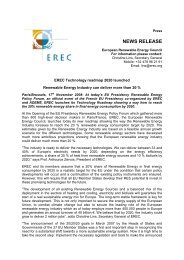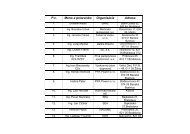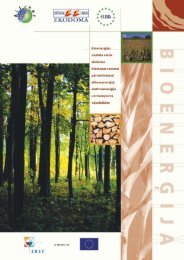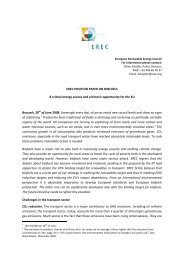CTO Assessment - European Commission
CTO Assessment - European Commission
CTO Assessment - European Commission
You also want an ePaper? Increase the reach of your titles
YUMPU automatically turns print PDFs into web optimized ePapers that Google loves.
Wood fuel<br />
The sector of wood supply has changed<br />
over the last years in Europe with an<br />
increasing international trade due to<br />
large scale users especially in Northern<br />
Europe. Trade of biofuels covers<br />
wood waste, pellets and wood chips<br />
to reach a level of about 1 Mtoe per<br />
year in 2002/2003, compared to insignificant<br />
volume 10 years ago. The<br />
largest volume is traded from Baltic<br />
states to Nordic countries, but also<br />
from Finland to other Nordic countries,<br />
and within central Europe (especially<br />
Netherlands, Germany, Austria,<br />
Slovenia, Italy) 6 .<br />
During the recent past years, the<br />
market for pellets has increased<br />
sharply with almost 2 million tons in<br />
2002. 115 pellets production plants<br />
have been identified in Europe in<br />
2003 for a capacity exceeding 3 Million<br />
tonnes. Pellets are also imported<br />
from USA and Canada. Sweden and<br />
Denmark are the biggest users but the<br />
market is also growing quickly in<br />
Austria, Italy and Germany. Pellets<br />
are used in large scale CHP plants to<br />
substitute coal and in individual heating<br />
systems.<br />
Biomass for electricity<br />
The market : The EU directive for renewable<br />
electricity (2001/77/CE)<br />
adopted in October 2001 states indicative<br />
targets per country to reach on<br />
average 22 % of renewable electricity<br />
in 2010 against 13.9 % in 1997.<br />
Biomass for heat<br />
The market: Heat represents 90% of<br />
the use of solid biofuels which makes<br />
it a key market for bioenergy, and as<br />
well for renewables, as it represents<br />
the important share (50%) of the total<br />
energy demand in Europe 7 . Several<br />
experts and associations have<br />
pointed out the lack of appropriate<br />
legislation tools and policies to support<br />
market development, specially a<br />
directive on heat would be welcome.<br />
The market is more developed where<br />
biomass is competitive with fossil fuels<br />
due to the taxation systems and<br />
where district heating systems are operating,<br />
like in Scandinavian countries<br />
and more recently in Austria.<br />
Cogeneration of heat and power is developed<br />
on a large scale in Finland<br />
(7,370 MW thermal in 2000<br />
Eurobserv’ER 2001 ) and Sweden.<br />
The Finnish Alholmens Kraft plant is<br />
the largest biofuelled cogeneration<br />
plant in the world<br />
(240 MWe, 550<br />
MWth).<br />
Figure 5<br />
Electricity from renewables in 1999 and indicative targets for 2010 (%)<br />
80%<br />
1999 2010<br />
78.1<br />
70%<br />
60%<br />
50%<br />
40%<br />
30%<br />
20%<br />
10%<br />
0%<br />
1.4<br />
6.0<br />
14.0<br />
Belgium<br />
29.0<br />
Denmark<br />
5.4<br />
12.5<br />
Germany<br />
10.0<br />
20.1<br />
Greece<br />
13.1<br />
Luxembourg<br />
Source: EUBIONET, 2003, “Biomass survey in Europe”, EUBIONET Summary report, www.eubionet.vtt.fi, 29p.<br />
29.4<br />
Spain<br />
14.4<br />
21.0<br />
France<br />
5.3<br />
13.2<br />
Ireland<br />
19.6<br />
25.0<br />
Italy<br />
16.1<br />
5.7<br />
4.4<br />
9.0<br />
70.0<br />
Netherlands<br />
Austria<br />
10.1<br />
39.0<br />
Portugal<br />
30.5<br />
31.5<br />
Finland<br />
48.5<br />
60.0<br />
2.0<br />
10.0<br />
Sweden<br />
United Kingdom<br />
20<br />
Market Development


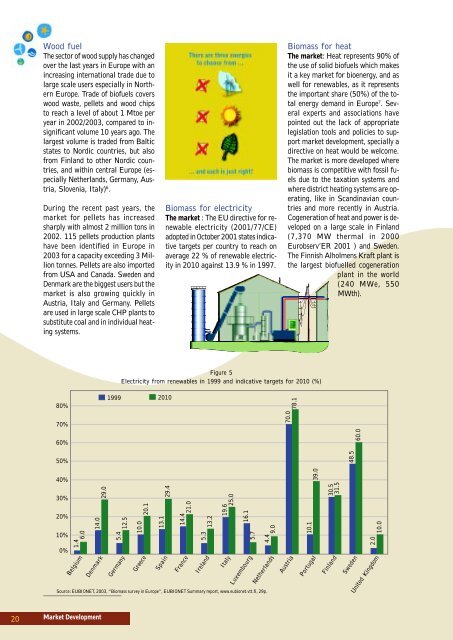
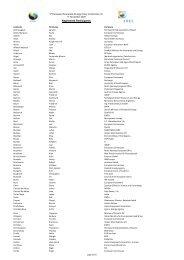
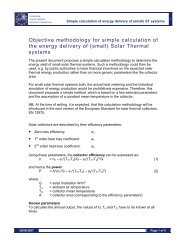
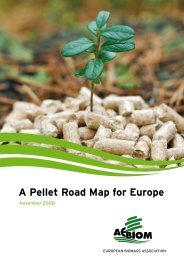
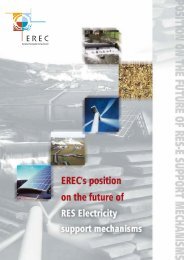

![Energy [R]evolution - Greenpeace](https://img.yumpu.com/47174859/1/184x260/energy-revolution-greenpeace.jpg?quality=85)
